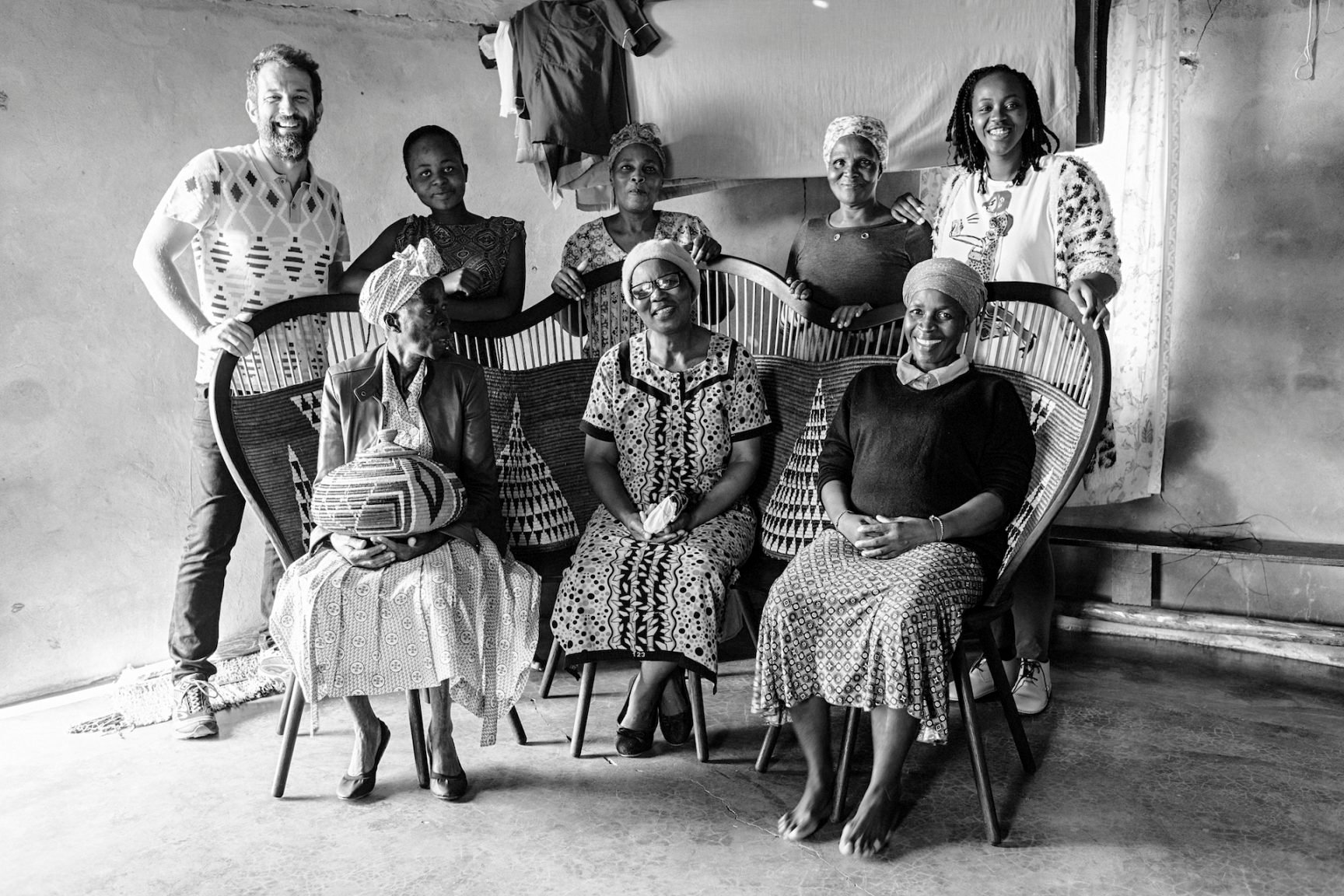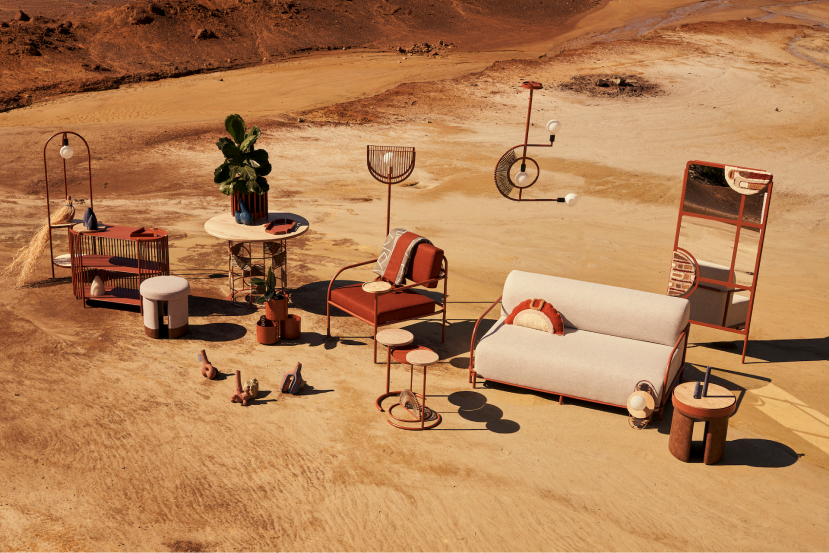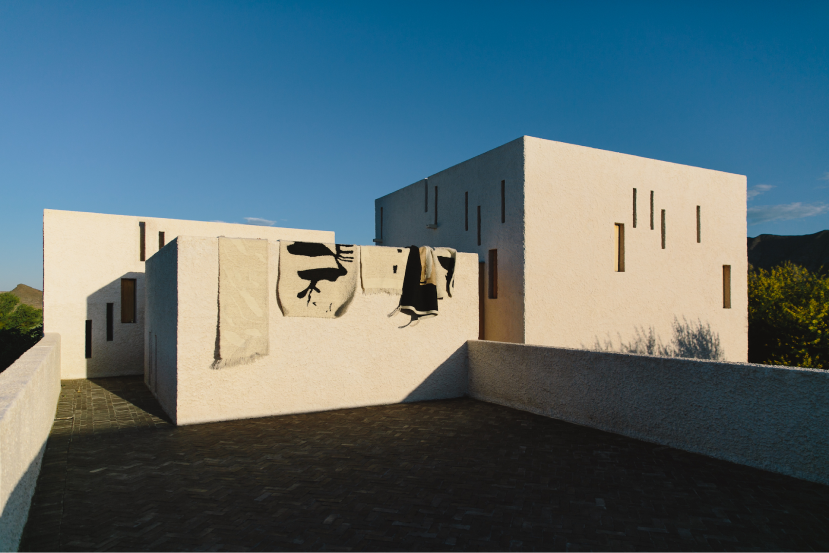The culture of collaboration within the South African art and design scene is one replete with tradition melding with modern and classic mediums. Creatives in this country are truly taking this mode of creation a step further, creating incredible work and celebrating successes in an effort to build each other up.
Photo credit: Brett Rubin
‘Collaboration’ is a commonly heard word now across the creative spectrum. But in South Africa it has become much more than just a buzzword in the interior and product design space. With cross pollination across disciplines and mediums giving rise to exciting new products and ranges, it also speaks to a supportive culture within the design communities, where creatives celebrate each other’s successes and showcase and elevate each other’s work.
One such designer is Mpho Vackier of The Urbanative, who has made collaboration a core value of her brand, having worked with other companies and creatives from the very beginning of her career. Her new range, Homecoming – The Collection, explores the idea of home while bringing together the varied talent and skill of creators, spanning textile designers to candle makers and ceramicists.
“With a lot of businesses having gone through a really difficult time during the lockdown, my aim was borne out of the idea that we rise together,” says Vackier. “And by inviting other designers to share their stories of home, it also allowed us the opportunity to see new possibilities.”
This collaboration’s multifaced items and creative inputs have resulted in a collection of well-rounded products that work together as a collective whole, and communicate the idea that home is not just a physical place, but a feeling of warmth, sanctuary and comfort.
Mpho Vackier of The Urbanative has made collaboration a core value of her brand. Her new range, Homecoming – The Collection, explores the idea of home while bringing together the varied talent and skill of creators, spanning textile designers to candle makers and ceramicists. Photo credit: Aart Verrips
The Urbanative is committed to telling African stories and illustrating, through design, the cultural and historical wealth of the continent. The collection explores vernacular African architecture from Nigeria, Cameroon, Burkina Faso, Libya, Marrakech, Niger and Mali, and celebrates diversity further through the naming of the pieces (each is named for a word that defines home in an indigenous African language).
“When we create in communities the result of the creations becomes layered with not only the stories that we are trying to tell, but also the stories of the people crafting the pieces with us,” says Vackier. “This results in work with a more impactful and universal presence.”
Vackier believes that collaboration is the future of design, and that to truly innovate and create newness, we have to invite differing points of view to the creative process. “The coming together of different ways of thinking is the secret sauce,” she adds.
The Urbanative is committed to telling African stories and illustrating, through design, the cultural and historical wealth of the continent. This collection explores vernacular African architecture from Nigeria, Cameroon, Burkina Faso, Libya, Marrakech, Niger and Mali (each piece is named for a word that defines home in an indigenous African language). Photo credit: Aart Verrips
Furniture designers Houtlander have been celebrating craft for years through their use of time-honoured woodworking techniques. But their collaboration with Beauty Ngxongo and Thabisa Mjo of Mash T Design Studio saw them delve further into tradition. By incorporating the handiwork of a group of weavers from Hlabisa (an area in KwaZulu-Natal known for its skilled artisans) into one of their collectable benches named the Hlabisa, a design that’s gone on to spawn a range of one-offs, they’ve merged two mediums to create an artwork. A partnership that came about in 2019, prompted by the curator of the South African pavilion at the Revelations trade show in Paris, Mjo and Houtlander’s concept was aimed at showcasing the immense skill and artistry of the traditional weavers of South Africa, and in so doing, underline its relevance in design today.
“There is such scope for traditional craft and technological-led design to work together,” says co-founder Philip Hollander. “We wanted to show that South African work should stay rooted in its traditions but embrace new and exciting technology to help preserve the art and culture.”
Houtlander has always stood for authenticity and innovation, a combination which lends itself to collaboration. The Hlabisa is the perfect balance of forward thinking design and time honoured craft, and demonstrates the brand’s passion for collaborating with designers that bring something completely different to the process.
“Collaboration is important because it broadens one’s discipline and opens the door for more innovation, as well as allowing you as a designer to bring something to market that is beyond your own set of skills,’ says Hollander.
Furniture designers Houtlander collaborated with Beauty Ngxongo and Thabisa Mjo of Mash T Design Studio, incorporating the handiwork of a group of weavers from Hlabisa (an area in KwaZulu-Natal known for its skilled artisans) into one of their collectable benches named the Hlabisa. Photo credit: Brett Rubin
Similarly combining varied skillsets, US-based artist Tara Hogan teamed up with South African mohair designer, Frances Van Hasselt, on the Tulsi by Tara Hogan x FVH collection, that translates Hogan’s paintings into large-scale rugs. Meeting over social media first, then in person in New York at a trade show, they shared an instant, intuitive bond along with a passion for handmade, one-of-a-kind pieces, collectors’ items that can be passed down from one generation to the next.
Transferring the subtle elegance and sense of calm of Hogan’s works into the textured, hand-woven medium of textile required Van Hasselt’s extensive knowledge and understanding of mohair to help discern where the raw or carded (combed) areas of mohair might work better than others in certain areas of the artwork. The resulting rugs, while functional, embody the artistry of the originals and have the ability to command a wall as artworks in their own right. Their collaborative journey too, allowed for new ideas to arise – working together and having support and insight during the creative process helped to bring up ideas that may never otherwise have come to the surface.
“Working with another artistic mind means sharing a part of yourself with another person who is equally sensitive and possibly frightened to fail,” says Hogan. “But you have a tree you both grow to lean on, and in the end you’ve told a great story together.”
US-based artist Tara Hogan teamed up with South African mohair designer, Frances Van Hasselt, on the Tulsi by Tara Hogan x FVH collection, that translates Hogan’s paintings into large-scale rugs. Photo credit: Stephanie Veldman









